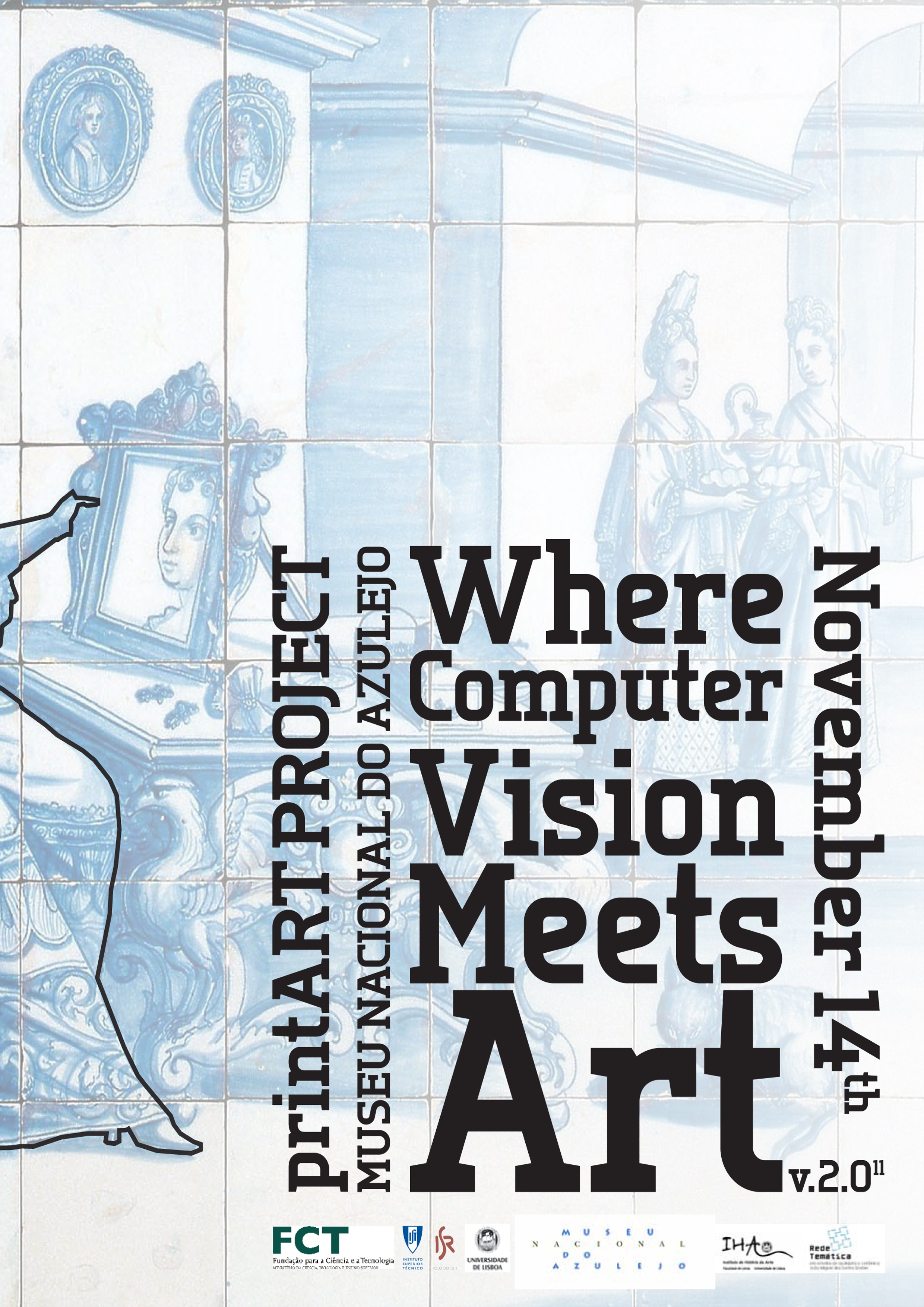My colleagues in Lisbon have organised the second edition of the workshops of the PrintART project. Please check this link for the full program and for a description of the workshop theme. In the following you can find an excerpt from the workshop introduction:
The tile paintings is rightly characterized as one of the art forms that more easily identifies the Portuguese artistic heritage. It has enjoyed a growing attention in recent years and the number of links between the analysis of the tiles work and traditionally unrelated knowledge domains has been increasing. For example, the Robotics and, particularly, Computer Vision, is one of these domains and the PrintART Project, underway since 2010, can represent a milestone in this relationship between different fields of knowledge.
[...]
The main objective of the PrintART project is to provide a tool for retrieving the prints that inspired a given painting on a panel of tiles. This tool compares prints and images of tiles to find matching shapes and compositions. The question that the project seeks to answer is: by introducing an image of a panel of tiles in a vast database of images of prints, will it be able to identify one or more prints similar to that panel?
For the art history researcher, to look for prints that inspired the artists to paint a particular composition is still a job that requires thorough study and enormous capacity to exploit the researcher’s visual memory. Although the human eye is still infinitely more effective that any software tool, new technologies, and massive digitization of books and images, present great opportunities to the community.
[...]
The use of statistical techniques for pattern recognition has enormous potential to perform automatic analysis of databases of art images, thus reducing the time normally spent by the observer who does not use any software tool. The technology developed in this project shows promising results and the use of these new techniques can open new perspectives to art history.

No Comment.
Add Your Comment